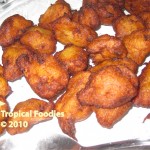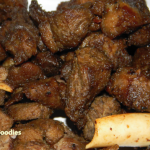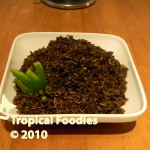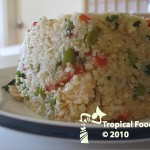CINNAMON
Cinnamon is a spice, which originally came from the Moluccas (Indonesia) and was brought to Africa by European traders. This seasoning is one of the ingredients in the commonly used five-spice powder. Mostly grown small scale in compound gardens.
Neither yam nor potato!
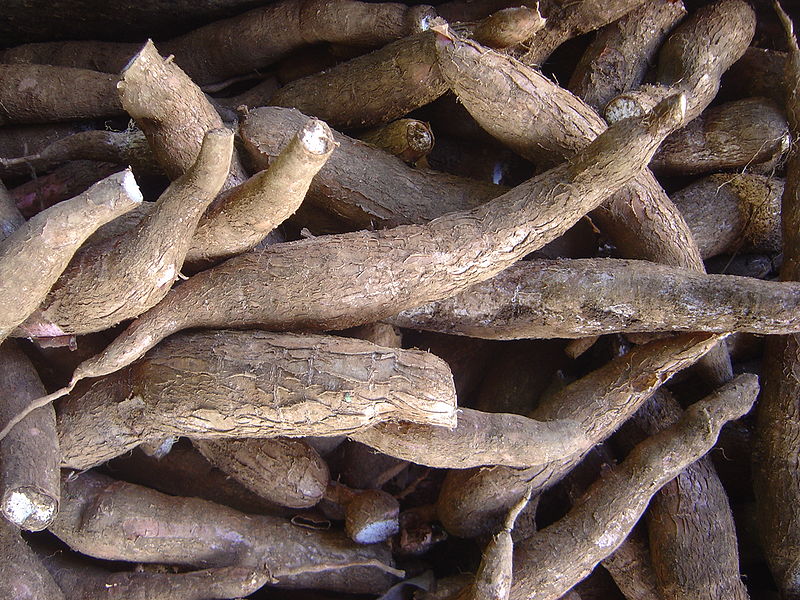 CASSAVA (MANIOC/TAPIOCA)
CASSAVA (MANIOC/TAPIOCA)
The cassava is an important source of dietary carbohydrates in the tropical and subtropical areas of the world, with its roots providing food for over 500 million people. It comes with hard and starchy white flesh. This vegetable is the basis in the making of cassava flour. The cassava contains a strong poison, cyanide, which needs to be eliminated during the preparation of the flour. This is done by cooking or fermenting the vegetable. Drying and grounding comes next. The cassava flour or gari is now ready for storage or use. The cassava or manioc plant has its origin in South America. Amazonian Indians used cassava instead of or in addition to rice/potato/maize. Portuguese explorers introduced cassava to Africa through their trade with the African coasts and nearby islands. Africans then further diffused cassava, and it is now found in almost all parts of tropical Africa. Africans adopted it for several reasons: The cassava plant is possible to cultivate in shifting systems and it gives flexible harvest. Furthermore it is resistant to locust attacks and drought.
The cassava root is mostly starch with very little vitamins and minerals, However one cup provides about 40 percent of the US recommended daily allowance for manganese and 71 percent of vitamin C.
Manganese is one of the trace elements necessary for strong bones. Low levels of the mineral can lead to bones being malformed. While research has not shown that low levels lead to bone loss osteoporosis, it has been shown to help prevention of bone loss in menopausal women.Manganese is also important in the formation of connective tissue, blood clotting factors and sex hormones. Low levels have been associated with infertility, muscle weakness and seizures.
As a very good source of vitamin C cassava can help your body repair tissues. It is an important component of proteins used to make skin, tendons, ligaments and blood vessels. Vitamin C is also used to heal wounds and form scar tissue and to repair bones, skin and teeth.
Low in saturated fat, cholesterol and sodium, cassava root is a good choice for heart health. (source:http://www.royalgazette.com/article/20111220/ISLAND05/712209956)
Cool Beans
 BEANS
BEANS
The bean plants have their origin in Central and South America and were commonly used by the Aztecs. Many variations stem from this ancestral plant: Limas, black beans, pinto beans, white beans, green beans, kidney beans and black-eyed peas, to mention the most common.
In Africa black-eyed beans (which are indigenous to the continent, where they are a staple food), mung beans and red kidney beans are most commonly used. Beans are used in several types of dishes, for instance soups, stews, rice dishes, salads and as snacks. Mostly grown small scale in compound gardens.
Barley, Barley, Barley
 BARLEY
BARLEY
The barley plant is believed to have its origin in the highlands of East Africa. Nowadays it is an important food staple to people in Ethiopia. It is mostly used as an ingredient in different types of bread. Throughout Europe and the US barley is mostly made into malt, an important ingredient in beer and whiskey. Even the ancient Babylonians brewed beer from this plant. Mostly grown small scale in compound gardens.

